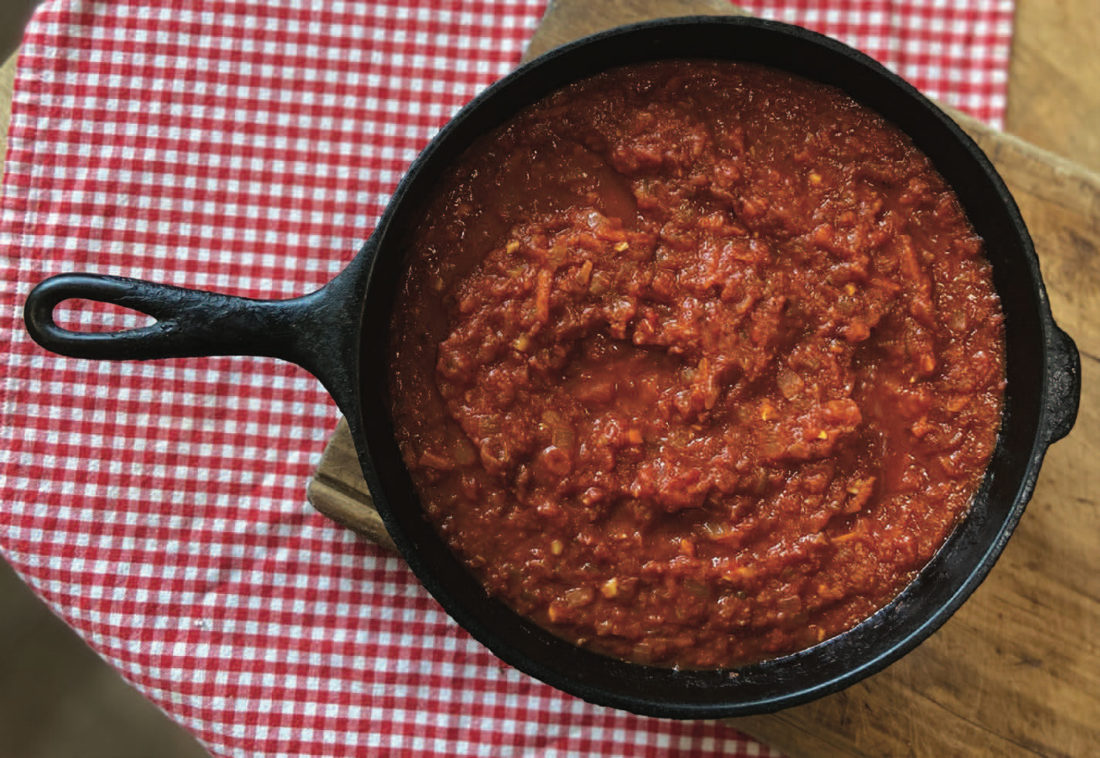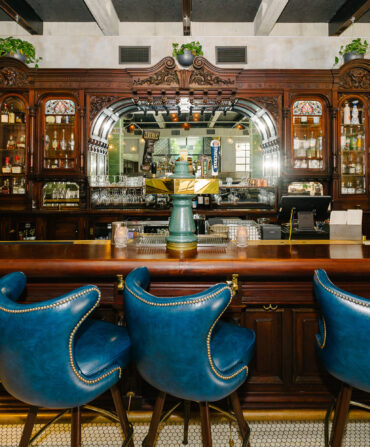When Elizabeth M. Williams was growing up in New Orleans, a pot of simmering tomato sauce was a fixture on her Nana’s (or grandmother’s) stove. Balancing just the right amount of sweet—gained from grated carrots rather than sugar—and savory—thanks in part to dissolved anchovies at the base—the sauce adorned the pastas, chicken stews, roasts, and sausages made by her grandmother, who immigrated from Sicily in 1910 when she was eighteen years old. “And now I cook the sauce all the time,” says Williams, a founder of the Southern Food & Beverage Museum. In fact, Williams deems the recipe so elemental that she gave it a place of honor within her new book, Nana’s Creole Italian Table, in both the condiment section and on the cover.
“In Sicily, tomato sauce is pasta,” she says. “Wherever you are in Italy, tomato sauce is thought of as Sicilian. This is a quintessential thing.” In New Orleans, that sauce became inevitably creolized and morphed into a roux-based red gravy, which Williams’s Nana would tolerate, though only for certain uses, like meatball or sausage po’ boys. “[Nana] drew the line at no red gravy on pasta,” Williams says. “That was her inviolate rule.”
Through recipes for both sauces, as well as other Creole Italian classics including bruccialuna, barbecue shrimp, oysters and pasta, and a litany of stuffed vegetables, Williams’s book tells the story of how Italian immigrants in New Orleans revolutionized the city and its cuisine.
“When I started out, the book was going to just be about growing up and having this fabulous access to the Sicilian community in New Orleans,” Williams says. “We would go to big parties where people would be playing the mandolin and singing old-fashioned folk songs and eating Sicilian food. That went away as people died off, and now I have children and grandchildren who don’t have this connection. I was thinking that someone had to tell this story, and as I started to tell it, I realized it was a food story.”
For Williams, it’s these food stories that make her hometown great. “New Orleans absorbs the food of the different cultures who settle here,” she says. “If we were to say: after some arbitrary date, whatever food that comes into the city isn’t really New Orleans food, that would kill us. Our dynamism is what keeps our food alive and thriving.”








